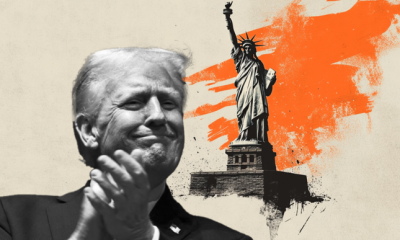

others
Mexican Peso pops to weekly high, as unchanged Fed policy boosts confidence – Crypto News
- Mexican Peso hits weekly high of 16.90 versus USD after Fed maintains current policy.
- The Mexican currency stays strong despite lower Mexico Business Confidence.
- US economic data showing a smaller trade deficit and stable job claims, failed to boost the Greenback.
- Powell states Fed’s future policy decisions will be made “meeting by meeting”.
The Mexican Peso prolonged its rally for the second consecutive day on Thursday and hit a new weekly high of 16.90 against the Greenback following the US Federal Reserve’s (Fed) decision to keep monetary policy unchanged on Wednesday. Data from the United States (US) revealed that the trade deficit narrowed, while the number of Americans filing for unemployment claims remained unchanged. The USD/MXN trades at 16.92, down by 0.42%.
Mexico’s economic docket revealed that April’s Business Confidence deteriorated. However, the Mexican currency remained strong against the US Dollar, following the Fed’s decision to keep rates unchanged due to the “lack of progress” on the disinflation process.
Fed Chair Jerome Powell added that it wouldn’t be appropriate to ease policy until they gather confidence that inflation is trending toward the 2% goal. He added they – the Fed – would remain data dependent and that the upcoming monetary policy decision would be decided “meeting by meeting.”
Powell said the Fed’s belief that monetary policy is sufficiently restrictive to curb inflation and disregarded the potential of hiking rates when he asked.
Daily digest market movers: Mexican Peso shrugs off Fed’s decision, mixed US data
- Mexico’s Business Confidence deteriorated from 54.4 to 54.2. The report showed that businesses remain confident in the current economic conditions in Mexico. Further data in the report added that businesses’ current economic conditions had worsened.
- Although most analysts estimate Banxico will keep rates unchanged at 11.00%, new data could prompt heated discussions among Banxico’s Governing Council members on May 9.
- Last week, Banxico Governor Victoria Rodriguez Ceja said the central bank would be data dependent. However, weak GDP data could lead to a “live meeting” on May 9.
- Citibanamex Survey showed that most analysts expect Banxico to hold rates unchanged at the May meeting. The median foresees a rate cut in June, while they estimate the main reference rate to end the year at 10.00%, up from 9.63% previously.
- The US Trade Balance showed the deficit narrowed by -0.1%, from $-69.5 billion to $-69.4 billion, missing estimates of $-69.1 billion. Imports dived -1.6% to $327 billion, while exports contracted -2.0% to $257.6 billion.
- The US Bureau of Labor Statistics (BLS) revealed that US Initial Jobless Claims for the week ending April 27 rose by 208K, unchanged from the previous reading and lower than the 212K projected by the consensus.
- On Wednesday, the Fed decided to keep the federal funds rate unchanged at 5.25%-5.50 %. They acknowledged that risks to achieving the Fed’s dual mandate on employment and inflation “moved toward better balance over the past year.” Although they said there’s progress on inflation, recent data showed that it has stalled.
- Fed policymakers added that they would begin reducing their balance sheet holdings of US Treasury securities from $60 billion to $25 billion starting in June.
- Data from the Chicago Board of Trade (CBOT) suggests that traders expect the fed funds rate to finish 2024 at 5.045%, down from 5.100% on Wednesday.
USD/MXN technical analysis: Mexican Peso regains control as USD/MXN sellers eye 100-day SMA
The Mexican Peso remains strong after the USD/MXN dipped beneath the crucial 17.00 psychological level, exacerbating the Peso’s appreciation toward 16.90. However, key support levels remain on their way, to challenge lower levels last seen in 2015. Additionally, the Relative Strength Index (RSI) suggests that bulls are looming with the indicator standing in bullish territory despite trending to its 50 neutral level.
For a bearish continuation, USD/MXN sellers must crack the 100-day Simple Moving Average (SMA) at 16.94, followed by the 50-day SMA at 16.81, before challenging last year’s low of 16.62. On the other hand, buyers need to reclaim the 17.00 figure before they can test the 200-day SMA, followed by the weekly high of 17.24. The next key resistance levels would be the January 23 swing high of 17.38 and the year-to-date (YTD) high of 17.92, ahead of 18.00.
Banxico FAQs
The Bank of Mexico, also known as Banxico, is the country’s central bank. Its mission is to preserve the value of Mexico’s currency, the Mexican Peso (MXN), and to set the monetary policy. To this end, its main objective is to maintain low and stable inflation within target levels – at or close to its target of 3%, the midpoint in a tolerance band of between 2% and 4%.
The main tool of the Banxico to guide monetary policy is by setting interest rates. When inflation is above target, the bank will attempt to tame it by raising rates, making it more expensive for households and businesses to borrow money and thus cooling the economy. Higher interest rates are generally positive for the Mexican Peso (MXN) as they lead to higher yields, making the country a more attractive place for investors. On the contrary, lower interest rates tend to weaken MXN. The rate differential with the USD, or how the Banxico is expected to set interest rates compared with the US Federal Reserve (Fed), is a key factor.
Banxico meets eight times a year, and its monetary policy is greatly influenced by decisions of the US Federal Reserve (Fed). Therefore, the central bank’s decision-making committee usually gathers a week after the Fed. In doing so, Banxico reacts and sometimes anticipates monetary policy measures set by the Federal Reserve. For example, after the Covid-19 pandemic, before the Fed raised rates, Banxico did it first in an attempt to diminish the chances of a substantial depreciation of the Mexican Peso (MXN) and to prevent capital outflows that could destabilize the country.
-
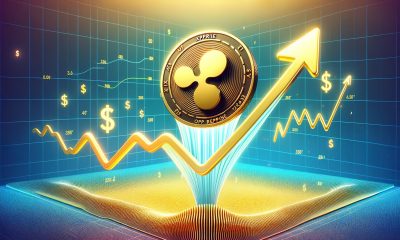
 Blockchain1 week ago
Blockchain1 week agoXRP Price Gains Traction — Buyers Pile In Ahead Of Key Technical Breakout – Crypto News
-

 Technology1 week ago
Technology1 week agoSam Altman says OpenAI is developing a ‘legitimate AI researcher’ by 2028 that can discover new science on its own – Crypto News
-

 De-fi7 days ago
De-fi7 days agoBittensor Rallies Ahead of First TAO Halving – Crypto News
-

 De-fi1 week ago
De-fi1 week agoNearly Half of US Retail Crypto Holders Haven’t Earned Yield: MoreMarkets – Crypto News
-

 Technology1 week ago
Technology1 week agoMicrosoft ‘tricked users into pricier AI-linked 365 plans,’ says Australian watchdog; files lawsuit – Crypto News
-

 De-fi1 week ago
De-fi1 week agoAI Sector Rebounds as Agent Payment Systems Gain Traction – Crypto News
-

 Blockchain1 week ago
Blockchain1 week agoBig Iran Bank Goes Bankrupt, Affecting 42 Million Customers – Crypto News
-
Business1 week ago
Crypto Market Rally: BTC, ETH, SOL, DOGE Jump 3-7% as US China Trade Talks Progress – Crypto News
-

 Blockchain1 week ago
Blockchain1 week agoIBM Set to Launch Platform for Managing Digital Assets – Crypto News
-
Technology1 week ago
Ethereum Supercycle Strengthens as SharpLink Gaming Withdraws $78.3M in ETH – Crypto News
-
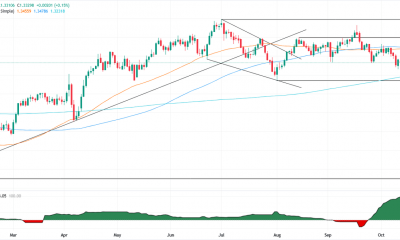
 others1 week ago
others1 week agoGBP/USD floats around 1.3320 as softer US CPI reinforces Fed cut bets – Crypto News
-

 De-fi1 week ago
De-fi1 week agoNearly Half of US Retail Crypto Holders Haven’t Earned Yield: MoreMarkets – Crypto News
-

 Cryptocurrency1 week ago
Cryptocurrency1 week agoWestern Union eyes stablecoin rails in pursuit of a ‘super app’ vision – Crypto News
-
others1 week ago
Indian Court Declares XRP as Property in WazirX Hack Case – Crypto News
-

 Blockchain1 week ago
Blockchain1 week agoSolana Eyes $210 Before Its Next Major Move—Uptrend Or Fakeout Ahead? – Crypto News
-

 De-fi1 week ago
De-fi1 week agoREP Jumps 50% in a Week as Dev Gets Community Support for Augur Fork – Crypto News
-

 De-fi7 days ago
De-fi7 days agoBitcoin Dips Under $110,000 After Fed Cuts Rates – Crypto News
-

 De-fi1 week ago
De-fi1 week agoNearly Half of US Retail Crypto Holders Haven’t Earned Yield: MoreMarkets – Crypto News
-

 Blockchain1 week ago
Blockchain1 week agoXRP/BTC Retests 6-Year Breakout Trendline, Analyst Calls For Decoupling – Crypto News
-

 Cryptocurrency1 week ago
Cryptocurrency1 week agoUSDJPY Forecast: The Dollar’s Winning Streak Why New Highs Could Be At Hand – Crypto News
-

 De-fi1 week ago
De-fi1 week agoMetaMask Fuels Airdrop Buzz With Token Claim Domain Registration – Crypto News
-

 De-fi1 week ago
De-fi1 week agoTokenized Nasdaq Futures Enter Top 10 by Volume on Hyperliquid – Crypto News
-

 Technology1 week ago
Technology1 week agoBenQ MA270U review: A 4K monitor that actually gets MacBook users right – Crypto News
-
others1 week ago
Is Changpeng “CZ” Zhao Returning To Binance? Probably Not – Crypto News
-
Business1 week ago
Crypto ETFs Attract $1B in Fresh Capital Ahead of Expected Fed Rate Cut This Week – Crypto News
-

 Cryptocurrency1 week ago
Cryptocurrency1 week agoInside Bitwise’s milestone solana ETF launch – Crypto News
-

 Business7 days ago
Business7 days agoStarbucks Says Turnaround Strategy Drives Growth in Global Sales – Crypto News
-

 others5 days ago
others5 days agoMETA stock has lower gaps to fill – Crypto News
-

 Technology1 week ago
Technology1 week agoSurvival instinct? New study says some leading AI models won’t let themselves be shut down – Crypto News
-
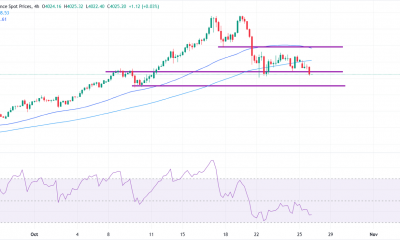
 others1 week ago
others1 week agoGold weakens as US-China trade optimism lifts risk sentiment, focus turns to Fed – Crypto News
-

 Cryptocurrency1 week ago
Cryptocurrency1 week agoGold Price Forecast 2025, 2030, 2040 & Investment Outlook – Crypto News
-

 Metaverse1 week ago
Metaverse1 week agoIt isn‘t just AI. Earnings and the economy show the rally has legs. – Crypto News
-

 Cryptocurrency1 week ago
Cryptocurrency1 week agoKERNEL price goes vertical on Upbit listing, hits $0.23 – Crypto News
-
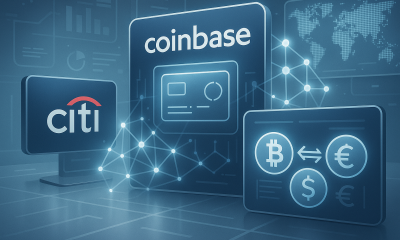
 Cryptocurrency1 week ago
Cryptocurrency1 week agoCitigroup and Coinbase partner to expand digital-asset payment capabilities – Crypto News
-

 Cryptocurrency1 week ago
Cryptocurrency1 week agoWhy Is Pi Network’s (PI) Price Up by Double Digits Today? – Crypto News
-

 De-fi1 week ago
De-fi1 week agoCrypto Market Edges Lower While US Stocks Hit New Highs – Crypto News
-
others1 week ago
Can ASTER Price Rebound 50% as Whale Activity and Bullish Pattern Align? – Crypto News
-

 Technology7 days ago
Technology7 days agoGiving Nvidias Blackwell chip to China would slash USs AI advantage, experts say – Crypto News
-
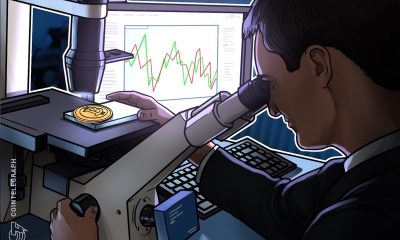
 Blockchain1 week ago
Blockchain1 week agoThe Bitcoin Stock-To-Flow ModelIsn’t the Best BTC Forecast Model: Analyst – Crypto News
-

 Metaverse1 week ago
Metaverse1 week agoIt isn‘t just AI. Earnings and the economy show the rally has legs. – Crypto News
-
Cryptocurrency1 week ago
Is Stock Tokenization Really Exploding? Not Even 0.01% – Crypto News
-

 De-fi1 week ago
De-fi1 week agoCRO Jumps After Trump’s Truth Social Announces Prediction Market Partnership with Crypto.Com – Crypto News
-
Technology1 week ago
Breaking: $2.6B Western Union Announces Plans for Solana-Powered Stablecoin by 2026 – Crypto News
-

 Blockchain1 week ago
Blockchain1 week agoVisa To Support Four Stablecoins on Four Blockchains – Crypto News
-
others1 week ago
Pi Coin Gains Another 15% As Pi Network Joins ISO 20022 For Seamless Banking Integration – Crypto News
-

 others1 week ago
others1 week agoBank of Canada set to cut interest rate for second consecutive meeting – Crypto News
-

 Cryptocurrency1 week ago
Cryptocurrency1 week ago‘Moments of the Unknown’: Justin Aversano Shares Globetrotting Love Letter to Humanity – Crypto News
-
others1 week ago
GBP flat vs. USD with notably muted reaction to retail sales & PMI data – Scotiabank – Crypto News
-

 Cryptocurrency1 week ago
Cryptocurrency1 week agoUSDJPY Forecast: The Dollar’s Winning Streak Why New Highs Could Be At Hand – Crypto News
-
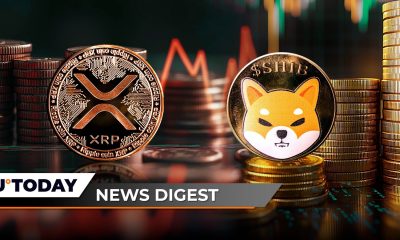
 Cryptocurrency1 week ago
Cryptocurrency1 week agoXRP Reversal Sends Price Towards $1, DOGE Treasury to Go Public, Bitcoin Beats Gold, Binance’s CZ Pardoned — Top Weekly Crypto News – Crypto News







